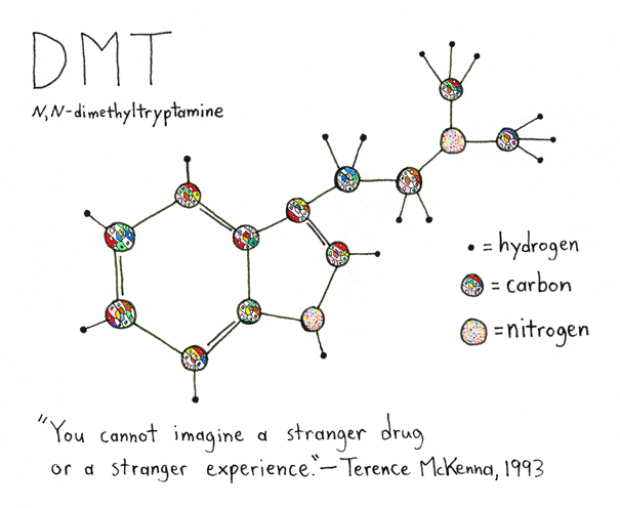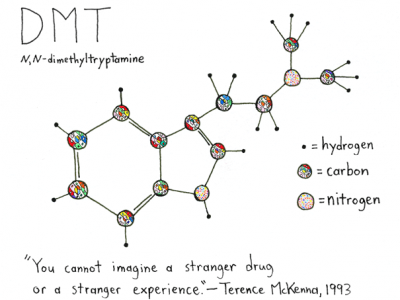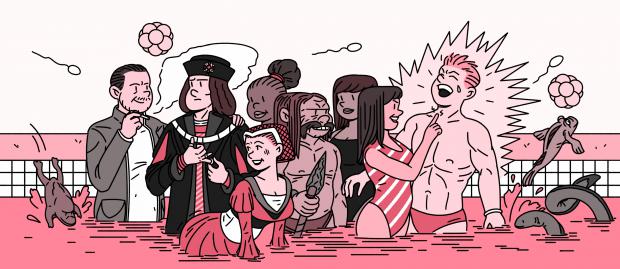You can train your body into thinking it’s had medicine
 This article first appeared on Mosaic and is republished here under a Creative Commons licence
This article first appeared on Mosaic and is republished here under a Creative Commons licence
Marette Flies was 11 when her immune system turned against her. A cheerful student from Minneapolis, Minnesota, she had curly brown hair and a pale, moon-shaped face, and she loved playing trumpet in her high-school band. But in 1983, she was diagnosed with lupus, a condition in which the immune system destroys the body’s healthy tissues.
It ran rampant, attacking her body on multiple fronts. She was given steroids to suppress her immune system; the drugs made her face swell up, and her hair fell out onto her pillow and into her food. But despite the treatment her condition worsened over the next two years, with inflamed kidneys, seizures and high blood pressure. She suffered frequent headaches and her whole body was in pain.
Listen to Jo Marchant on the Little Atoms podcast
By 1985, antibodies were attacking a vital clotting factor in Marette’s blood, causing her to bleed uncontrollably. It got so bad that her doctors considered giving her a hysterectomy, because they were worried that when her periods started she might bleed to death. She took drugs including barbiturates, antihypertensives, diuretics and steroids but her blood pressure kept rising. Then her heart started to fail, and her doctors reluctantly decided give her Cytoxan, an extremely toxic drug.
Cytoxan is very good at suppressing the immune system. But it causes vomiting, stomach aches, bruising, bleeding, and kidney and liver damage, as well as increased risk of infections and cancer, and at the time its use in humans was experimental. Karen Olness, a psychologist and paediatrician now at Case Western Reserve University in Ohio, was helping Marette to cope with the stress and pain of her condition, and she was concerned that if lupus didn’t kill the teenager, this new drug might. Then Marette’s mother showed Olness a scientific paper she had seen. It claimed to have slowed lupus in mice – but with just half the usual dose of Cytoxan.
Avoiding foods that have poisoned us in the past protects us from getting ill again
The results were part of a well-known and seemingly mundane phenomenon that has been driving a quiet revolution in immunology. Its proponents hope that by cutting drug doses, it will not only minimise harmful side-effects but also slash billions from healthcare costs, transforming treatment for conditions such as autoimmune disorders and cancer. The secret? Teaching your body how to respond to a particular medicine, so that in future it can trigger the same change on its own.
Ever eaten a favourite food that made you sick – prawns, say – and discovered that for weeks or months afterwards, you couldn’t face eating it? This effect is called learned or conditioned taste aversion and it makes sense: avoiding foods that have poisoned us in the past protects us from getting ill again.
In 1975, a psychologist in New York was studying taste aversion in a group of rats and got an utterly mystifying result.
Robert Ader, working at the University of Rochester, gave his animals saccharin solution to drink. Rats usually love the sweet taste but for this experiment, Ader paired the drink with injections of Cytoxan, which made them feel sick. When he later gave the animals the sweetened water on its own they refused to drink it, just as he expected. So to find out how long the learned aversion would last, he force-fed this harmless drink to them using an eyedropper. But the rats didn’t forget. Instead, one by one, they died.
Though Cytoxan is toxic, Ader’s rats hadn’t received anything close to a fatal dose. Instead, after a series of other experiments, Ader concluded that when the animals received saccharin and the drug together, they hadn’t just associated the sweet taste with feeling sick, they’d also learned the immunosuppression. Eventually, they’d responded to the sweetened water just as they had to the drug. Even though the second phase of the experiment involved no drug at all, the doses of water Ader fed them suppressed their immune systems so dramatically that they succumbed to fatal infections. In other words, their bodies were reacting to something that wasn’t really there, just because the circumstances made them expect it.
Conditioning has been driving a quiet revolution in immunology
The phenomenon in which we learn to associate a contextual cue with a physiological response is well known. It’s called conditioning and was discovered in the 1890s by the Russian physiologist Ivan Pavlov, who noticed that dogs learned to associate his presence with being fed, so that his arrival caused them to salivate even if he had no food. He showed that different signals – such as a buzzer or electric shock – could all be made to trigger the same automatic response.
Such learned associations are an important part of our daily lives. Cues prepare the body for important biological events such as eating or sex, and they trigger responses that have evolved to help us avoid – or flee from – danger. As well as inducing nausea, for example, exposure to a stimulus we associate with a previous allergic reaction (such as a grassy field or fluffy cat) can make us cough or sneeze even if no physical allergen is present, while previously scary situations (like a barking dog or enclosed space) can induce a state of fight-or-flight.
But Ader’s result was revolutionary because it showed that learned associations don’t only affect responses – such as nausea, heart rate and salivation – that scientists knew were regulated by the brain. His rats proved that these associations influence immune responses too, to the point at which a taste or smell can make the difference between life and death. The body’s fight against disease, his experiment suggested, is guided by the brain.
In fact, a similar discovery had already been made in Russia. In the 1920s, researchers at the University of St Petersburg were following up on Pavlov’s work, to see which other physiological responses could be conditioned.
Among them was the immunologist Sergey Metalnikov. Instead of suppressing the immune system, like Ader would, Metalnikov wanted to boost it. In one series of experiments, he repeatedly warmed guinea pigs’ skin at the same time as giving them injections (small doses of bacteria, for example) that triggered an immune response. Then he gave them – and another group of guinea pigs that hadn’t had this conditioning – a normally lethal dose of Vibrio cholerae bacteria, at the same time as warming their skin. The unconditioned animals died within 8 hours, Metalnikov reported, whereas the conditioned ones survived an average of 36 hours, and some of them recovered completely. Their response to a learned cue – the feeling of heat – appeared to have saved their lives.
Just like other learned associations, the phenomenon of conditioned immune responses makes evolutionary sense. Imagine that you encounter a pathogen – perhaps Salmonella bacteria in your prawn sandwich. As well as making you feel sick, this triggers a particular immune response. The next time you have a similar sandwich, your immune system doesn’t have to wait for physical signs of bacterial invaders before mounting that response. Through conditioning, it can get one step ahead by triggering the same defence as soon as you taste or even smell the prawns.
The Russian studies weren’t noticed in the West, however. And at first Ader’s work was ignored too, largely because there was no known mechanism by which an animal could learn an immune response. The immune system and nervous system were thought to be completely independent, so Ader’s theory that the two networks communicate was seen as crazy. Scientists were convinced that the immune system responds to physical signs of infection and injury without any help from the brain.
The body’s fight against disease is guided by the brain
“The time wasn’t right for this new thinking.” Manfred Schedlowski, a medical psychologist at the University of Essen in Germany, could be talking about Ader, but actually he’s describing his own experiences in the mid-1990s, when he first set out to study conditioned immune responses for himself.
He was always interested in the links between mind and body, he tells me. At school, he enjoyed philosophy as much as physiology. His PhD investigated the effects of stress on the immune system in skydivers. As a researcher at Hannover Medical School, he turned his attention to conditioning, determined to transform the phenomenon described by Ader into a therapy that could be used to help patients.
He met obstacles straight away. On the hunt for other scientists to collaborate with, he knocked on the doors of the big immunologists. “Some did not have time for me. Some listened to my story. One interrupted me after two to three minutes talking about the brain and the immune system. He said, ‘Dr Schedlowski, if you want to do something like that, become an artist. That has nothing to do with science.’”
Undaunted, Schedlowski set about training rats to associate the taste of saccharin with the immunosuppressant effects of a drug similar to Cytoxan, called CsA. He found that their conditioned response to saccharin suppresses proliferation of white blood cells in their spleens, and cuts the production of two vital chemicals that the immune system uses for signalling (the cytokines IL-2 and IFN-γ), just as the drug does.
Schedlowski wanted to know whether these conditioned responses could be medically useful. In particular, he thought they might be able to help with organ transplants, where a common risk is that the recipient’s immune system will attack the foreign organ. To find out, Schedlowski transplanted second hearts into the abdomens of rats that had been conditioned with sweetened water and CsA, and then gave them daily doses of sweetened water alone. They tolerated the transplanted hearts for around three days longer than a control group (which had received sham conditioning with a placebo), and for as long as rats that had received no conditioning but got a short course of treatment with CsA after transplant. The conditioned response was as good as the actual drug.
A second trial, in which Schedlowski combined this conditioned response with very low doses of CsA, was even more dramatic. In unconditioned rats that got a low-dose course of CsA treatment, the transplanted hearts survived on average 8 days, the same as with no treatment. A full-dose course raised this to 11 days. But in rats that had the conditioned response plus low-dose CsA, the hearts survived on average 28 days, and more than 20 per cent of them lasted for several months, the full length of the experiment.
Schedlowski had feared that if learned associations weaken over time – a process known as extinction – then conditioned immune responses wouldn’t be useful for patients on medication long-term. But by combining conditioning with a low drug dose, he says, “we can interfere with this extinction”. Once the rats were trained, the combination of a sweet taste and just a tiny amount of the original drug protected the hearts. It was a stunning result that suggested Ader had been right about the power of conditioned responses, even in life-threatening situations such as organ transplants.
In one trial, a conditioned response was as good as an actual drug
A few years after Ader first published his findings, David Felten, then a neuroscientist at the Indiana University School of Medicine, found what the critics said was missing – proof that the immune system and nervous system were linked.
Felten was using a powerful microscope to track the paths of different nerves in the bodies of dissected mice. He was particularly interested in the autonomic nervous system, which controls bodily functions like heart rate, blood pressure and digestion. He found nerves connecting to blood vessels, for example, just as expected, but was flabbergasted to see them also running into immune organs such as the spleen and thymus. “We were almost afraid to say anything,” he later told a reporter for PBS, in case he and his team had missed something and would “look like a bunch of doofuses”.
But Felten’s work checked out. It proved that there is a physical connection between nerves and immune cells. Felten moved to the University of Rochester to work with Ader and his colleague Nicholas Cohen, and the three are credited with founding the field known as psychoneuroimmunology, which is based on idea that the brain and immune system work together to protect us from illness. It’s now known that communication runs in both directions, through hardwired nerves but also chemical messengers – cytokines and neurotransmitters – that speak to both the immune system and the brain.
Ader wondered if this new understanding could be harnessed to help patients. Conditioning had killed his rats, but could it treat disease, as in the Russian guinea pigs? Then he got a call about a girl who desperately needed his help.
In a 1982 study, Ader had used conditioning to treat mice that had a lupus-like disease. He trained them to associate Cytoxan with saccharin solution, just as in his original experiment. After they learned the association, he kept giving the mice sweetened water along with half the usual drug dose for lupus. Compared to mice that received the same dose but weren’t conditioned, their disease progressed more slowly and they lived longer. This was the paper that Marette’s mother had seen.
Karen Olness telephoned Ader and asked: would his conditioning work on Marette? Could they train her immune system to respond to a lower drug dose than normal, sparing her from the worst of its toxicity?
Ader agreed to try.
Can you train the immune system to have the same reposnse to a lower drug dose?
The pair worked fast to design a conditioning regime for Marette. The first question was what taste to use. “We had to choose something that was unique, that she hadn’t experienced before,” says Olness. She considered vinegars, horehound, eucalyptus chips and various liqueurs before finally settling on a combination of rose perfume and cod liver oil.
The hospital’s ethics board approved the trial in an emergency meeting and Marette’s treatment started the next morning. She sipped the cod liver oil as Cytoxan flowed through an intravenous line into a vein in her right foot. Meanwhile Olness uncapped the rose perfume and waved it around the room.
They repeated this bizarre ritual once a month for the next three months. After that, Marette was exposed to cod liver oil and perfume every month, but received Cytoxan only every third month. By the end of the year, she had received just six doses of the drug instead of the usual twelve.
Marette responded just as her doctors would have hoped from the full drug amount. The clotting factor that her antibodies had been destroying reappeared, and her blood pressure returned to normal. After 15 months she stopped the cod liver oil and rose perfume but continued to imagine a rose, which she believed helped to calm her immune system. She graduated from high school and went to college, where she drove a sports car and played trumpet in the college band.

© Aaron Tilley and Kerry Hughes
At around nine o’clock every morning and evening, an alarm goes off on Barbara Nowak’s mobile phone. When she hears it, the 46-year-old geologist sits down at the kitchen table of her home in Sprockhövel, northern Germany, and takes a powerful cocktail of immunosuppressant drugs. Their names – tacrolimus, Mowel, prednisolone – are now woven into the fabric of her life. But today there’s a change to her daily routine. Before swallowing the pills, she pours herself a drink and downs it in one. It’s sweet, bitter, neon green – and tastes strongly of lavender.
In 1988, when she was 19 and studying for high-school exams, Nowak lost her kidneys to lupus. She has spent many exhausting years since on dialysis, sitting 12 hours a week at her local clinic with huge needles in her arm – her flesh is still gouged with scars. Receiving a donated kidney transformed her health. “It’s another life,” she says. She has energy again and can travel – she now takes part in geocaching challenges across Europe with her pet beagle. But there’s a downside. She’s dependent on twice-daily medication to suppress the immune responses that would destroy her transplant.
The drugs keep her kidney working but have side-effects, from tremors and nerve pain to gum disease and growth of facial hair. Nowak has been lucky enough so far to avoid the worst of these: although one drug started to destroy her red blood cells, since switching to an alternative she is dealing with her medication well. But she knows she is at increased risk of life-threatening infections, heart failure and cancer. And the drugs slowly poison the very organ she’s trying to save.
So Nowak is drinking this gaudy concoction as part of a pioneering trial at the nearby University of Essen. The “famous green drink” – as Schedlowski’s students like to call it – is an updated version of Marette’s rose and cod liver oil, invented to test conditioned responses in people. Like Ader, Schedlowski wanted something strange and unforgettable that stimulates several senses at once. He hit on strawberry milk mixed with green food colouring and essential oil. Its bright colour and overwhelming lavender flavour creates a bewildering mix of sensory cues, like drinking a violent, bittersweet battle between green and purple.
So far, Schedlowski has shown that after being associated with CsA, the drink reliably induces immunosuppression in healthy volunteers, creating on average 60–80 per cent of the effect of the drug. And just as in the rats, combining the conditioned response with a low drug dose prevents the learned association from fading. But will it work in patients?
I’m with Nowak on the trial’s last day. She is small but looks strong, and her tanned face is etched with smile lines. She says she was already familiar with the power of conditioning after using clicker training with her beagle, Ivy, and loved the idea of trying it on herself. “I thought it was so funny,” she says.
She removes her fleece to reveal a T-shirt with a stethoscope printed on it, then a research assistant hands her a 50-ml centrifuge tube, full to the brim with the green lavender milk. It’s the brightest thing in the room. “Danke schön!” she says. She gulps it fast, makes a face, and reaches into her rucksack for a sweet to take away the taste.
A lot of transplant patients die prematurely due to immunosuppressants
Schedlowski is running this trial with Oliver Witzke, a nephrologist at Essen’s University Hospital. For Witzke, the dangers of high drug doses are agonisingly real. He spends his career prescribing powerful immunosuppressants including CsA to kidney transplant recipients like Nowak. “Quite a lot of our patients die prematurely,” he says. “Not because the transplant fails… It’s due to the drugs that I prescribe every day.”
In every transplant patient he cares for, getting drug doses right is a delicate balancing act. Get the dose too low, and the patient will reject the kidney. But get it too high, and you’ll destroy the kidney or kill the patient. “We lose about 10 per cent of transplants in the first year,” says Witzke. Half of those patients go back on dialysis, the other half die. After that, the rate of decline slows, but some kidneys are still lost each year, and patients are at an increased risk of death due to drug complications.
One of the most damaging side-effects is nephrotoxicity: the drugs directly destroy kidney cells. The average life of a transplanted kidney is eight to ten years, says Witzke, and often when a kidney fails it isn’t clear whether the underlying cause is rejection or toxicity. “The dream for every transplant person is not to feed the patient from the first hour with a drug that’s toxic for the transplant.”
The search for immunosuppressants that aren’t nephrotoxic hasn’t been successful so far, but Witzke hopes that using conditioning to reduce doses will keep his patients alive longer. When he first heard about the concept, “I thought it was rubbish,” he admits. “As a doctor, I believe in pharmaceutics and drugs.” But Schedlowski’s experiments convinced him that the effect is not just a psychological trick. “It has a biochemical basis,” he says.
At this stage it’s too risky for Nowak and her fellow trial participants to reduce their drug doses, so the first step is to see if conditioning can suppress their immune systems over and above the effect of their normal pills. Some of the participants are taking CsA, but Nowak is on tacrolimus. In the learning phase of the study, she drank the lavender milk alongside her drugs, morning and evening, for three days. Then, after a two-day break, came the “evocation” phase, using the green drink to try to amplify the effect of her medication. She again downed the drink with her drugs, but this time, she drank it two extra times during the day, along with a placebo pill.
A pilot trial carried out in 2013 was promising: in all four patients, adding the green drink suppressed immune-cell proliferation and levels of the signalling molecule IL-2 by 20–40 per cent more than drugs alone. Now Nowak is part of a larger study of around 20 patients. If that works too, the next step will be to test whether this conditioned response can maintain immunosuppression while drug doses start to be reduced.
The hope is that this will reduce unwanted side-effects. Some problems, like infection risk, are likely to be an inevitable consequence of suppressing the immune system, whether that’s achieved using drugs or lavender milk. Others, like nausea, will perhaps be conditioned along with the immunosuppression. But Witzke argues that side-effects caused directly by drug toxicity – including kidney damage and increased cancer risk – are unlikely to accompany conditioned immune responses. It won’t be possible to lose the drugs completely, he says, but he hopes that even reducing doses by 20–30 per cent would improve quality of life while prolonging the survival of transplanted kidneys to perhaps 12 or 15 years.
Nowak isn’t convinced by the drink itself. “It’s awful!” she says. The taste got worse the more she drank, she explains, and she didn’t like carrying the odorous liquid around with her all day. An odd-tasting candy might be more practical and palatable, she suggests. But she’s right behind the principle of the trial, describing anything that might preserve her kidney as “very important”.
At 46, she is already on her third transplanted kidney. The first failed after a week, the second after 13 years – possibly because of drug toxicity – and her doctors say that after five years, her current kidney is ageing more quickly than expected. “It would be better if this one lasts longer,” she says bluntly. If it fails, she faces more years on risky, exhausting dialysis – average life expectancy on dialysis is just five to ten years – and the agonising wait for another donor.
Conditioning can reduce harmful side-effects and make treatments more cost-effective
Besides helping with organ transplants, there’s a plethora of uses that conditioning might have, by reducing harmful side-effects or simply making treatment more cost-effective for patients and governments that can’t afford constant full doses of the most expensive drugs. Other possibilities include allergies and autoimmune conditions.
For example, Ader carried out a small study in 1996 that paired Cytoxan with aniseed-flavoured syrup in ten people who had the autoimmune condition multiple sclerosis. When later given the syrup alongside a placebo pill, eight of them responded with immunosuppression similar to that produced by the active drug. In another study, published shortly before he died in 2011, Ader reported that quarter- or half-doses of corticosteroid ointment plus conditioned responses could control psoriasis just as well as a full drug dose.
Schedlowski aims to test that psoriasis result in a pilot study planned for spring 2016. He has already shown that after conditioning with the antihistamine drug desloratadine, the green drink reduces immune responses and symptoms in people allergic to dust mites. And he is collaborating with Rainer Straub, an immunologist at the University of Regensburg, Germany, to study conditioned immune responses in rats with a model of arthritis. The results are not yet published, but Straub says that so far, conditioned responses plus a low drug dose appears to suppress the inflammatory response “even better” than full-dose drug alone.
Animal studies hint that the approach might also be useful in the treatment of some cancers. In the 1980s and 90s, researchers at the University of Alabama, Birmingham, trained mice to associate the taste of camphor with a drug that activates natural killer cells – white blood cells that attack tumours. Then they transplanted aggressive tumours into the mice. After the transplant, mice given doses of camphor survived longer than those treated with immunotherapy, and in one experiment, two mice defeated their cancer altogether, despite receiving no active drug. Schedlowski is following up on these results too, and so far has shown that the effects of the anti-tumour drug rapamycin, which stops immune cells from dividing, can be conditioned in rats.
Key questions include pinning down the precise mechanism of conditioned immune responses, and working out why some individuals respond more strongly to conditioning than others. “Some people respond very nicely, but others don’t respond at all or they show only a minor response,” says Schedlowski. So far, he has discovered that the effect is mediated by the sympathetic nervous system, which drives our response to stress and is part of the network that Felten discovered linking the brain and immune system. In experiments where Schedlowski cut the nerve running to rats’ spleens, the conditioned response was completely blocked. Intriguingly, he has also found that people with high levels of anxiety, and of the stress hormone noradrenaline, respond better to conditioning, possibly because they have a more active sympathetic nervous system.
Another important area for future research is looking at which physiological responses – not just immune responses but among other systems too – can be conditioned. For example, Schedlowski hasn’t been able to condition the effects of corticotropin-releasing hormone, which is involved in the stress response. On the other hand, learned associations are known to be strong in pain and psychiatric disorders such as depression. It’s one reason why placebos are so effective in these conditions: our bodies learn the appropriate physiological response to pills we take and will subsequently repeat it, for example releasing pain-killing endorphins, even if a pill contains no active drug.
Years of research are required before conditioning regimes for cancer or transplant patients reach the clinic, but Schedlowski says the principle could be used much sooner to reduce drug doses for non-life-threatening conditions such as asthma or arthritis. Paul Enck, a medical psychologist at the University of Tübingen, Germany, agrees. He suggests a method that he calls “placebo-controlled dose reduction”. For example: when someone is prescribed a suitable drug, after two or three weeks of taking it regularly they could switch to a pack in which their pills are interspersed with identical placebos.
In a 2010 trial, children with attention deficit hyperactivity disorder (ADHD) were asked to take a distinctive green-and-white placebo pill alongside their drugs. The children knew these pills were placebos. But those who went through this conditioning process later did just as well on the placebo plus half their normal drug dose as another group did on the full drug dose – and significantly better than children who received a half-dose without conditioning. If used widely, advocates say, substituting some of the drugs we take for placebos could save billions of dollars in healthcare costs. In the US, for example, drugs for ADHD alone cost more than $5.3 billion a year.
Using placebos could save billions of dollars in healthcare costs
But the idea is not widely accepted. That’s perhaps partly because the prospect of reducing drug doses isn’t attractive for drug companies, which drive most research and development into new therapies. “They don’t like the story very much,” says Schedlowski. “They see their drug and their marketing jeopardised.” A wider problem is that for most doctors and scientists, the concept of treatments with no pharmaceutical component just makes no sense.
This scepticism is familiar to Adrian Sandler, a paediatrician at the Olson Huff Center for Child Development in Asheville, North Carolina, who carried out the 2010 ADHD trial. He says he’d love to run more trials to see how reducing drug doses might help with ADHD and other disorders such as autism, but his applications for funding have been rejected. “I think it’s a highly unusual kind of study,” he says. “The idea of using placebos in open-label to treat a condition is innovative, it turns things upside down. Some reviewers may find that hard to accept.”
When Ader and Karen Olness published Marette’s case, they were careful to say there was no proof that she wouldn’t have done just as well without the conditioning. Schedlowski has since built a strong case, however, that immune responses can be conditioned in humans with wide-ranging potential benefits. Marette, despite the initial success of her Cytoxan treatment, didn’t live to see it. She died aged 22, in February 1995. According to Olness, the toxic drugs she took earlier in life had irreparably damaged her heart.
Twenty years on, is Nowak likely to see benefits in her lifetime, or is resistance to this unconventional approach simply too strong? Brian Ferguson, who studies the innate immune system at the University of Cambridge, offers some hope. He thinks we’re on the verge of a “snowball” of research interest in brain–immune connections, driven in part by growing awareness of the importance of inflammation in neurodegenerative disease. That’s helping to break down barriers between neuroscience and immunology, he says, and might ultimately help acceptance of behavioural studies too.
Meanwhile Schedlowski is steadfastly optimistic that the benefits of conditioning are too great to ignore. “Ten years ago, nobody believed us,” he says. “Now, journals are much more open-minded to this kind of approach.” He believes that within a decade or two we’ll see a revolution in which learning regimes will become a routine component of drug treatment for a wide range of conditions. Drug companies might not see the advantages now, but in future, he argues, they could use the reduced side-effects of lower doses as a selling point.
For now, though, there’s a long way to go before the potential for conditioned immune responses is widely accepted, let alone used in the clinic. It’s hard enough for people to entertain the idea of using placebos to treat pain, or psychiatric disorders, and using them to influence immune responses sounds even crazier.
Brain–immune interactions are a “blind spot” for immunologists, admits Ferguson, with funding and interest for this type of work practically non-existent. Researchers are “vaguely” aware that the two systems communicate, he says, “but there’s this traditionality whereby people describe the immune system as everything going on from the neck downwards, and the central nervous system is everything from the neck upwards, and the two things haven’t been linked very much.”
Pavlov won a Nobel Prize for showing that the digestive system, previously thought to function independently, is in fact tightly controlled by the brain. Despite showing that the same is true for the immune system, Ader and Felten are barely known, even among immunologists. Schedlowski, supported by the DFG (the German Research Foundation), leads one of the only teams researching conditioned immune responses. “I like to say we’re the best in the world,” he jokes. “Because there is nobody else!”







